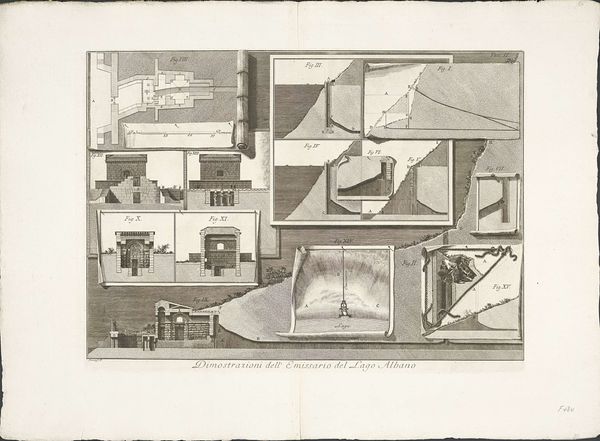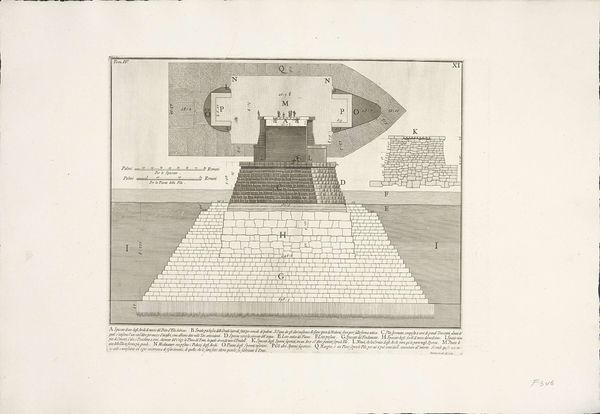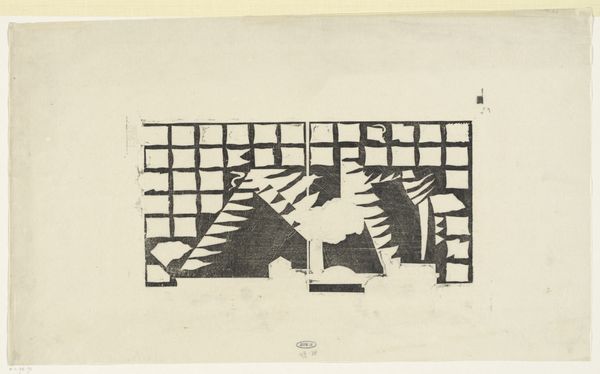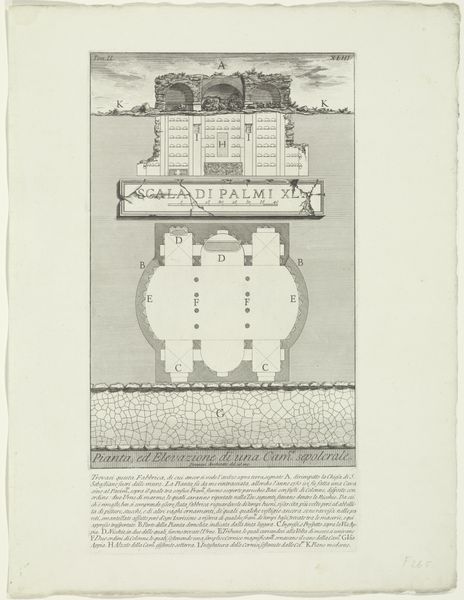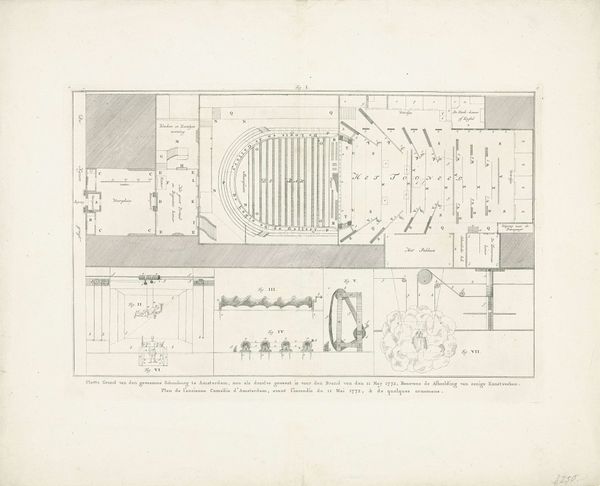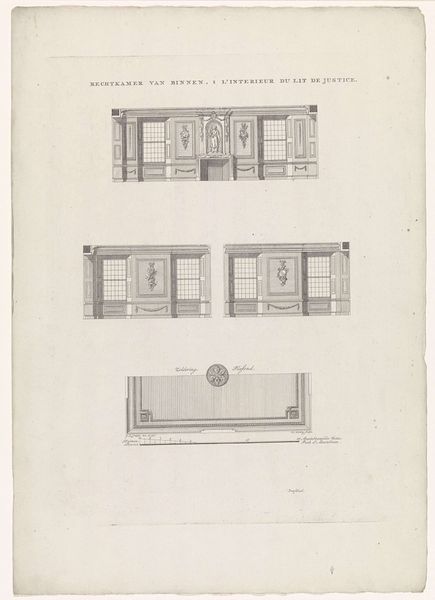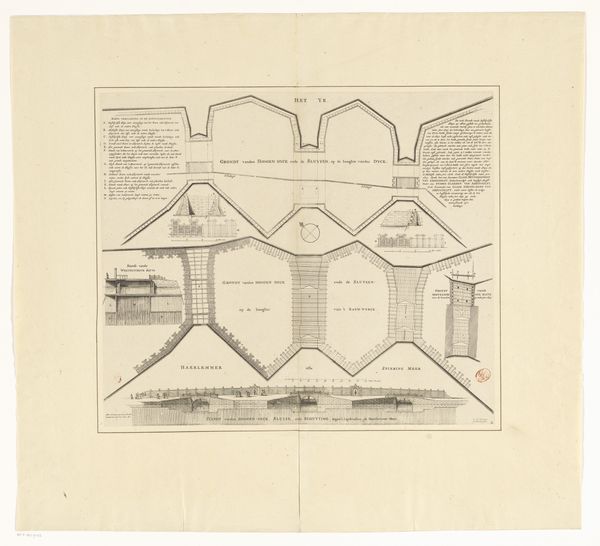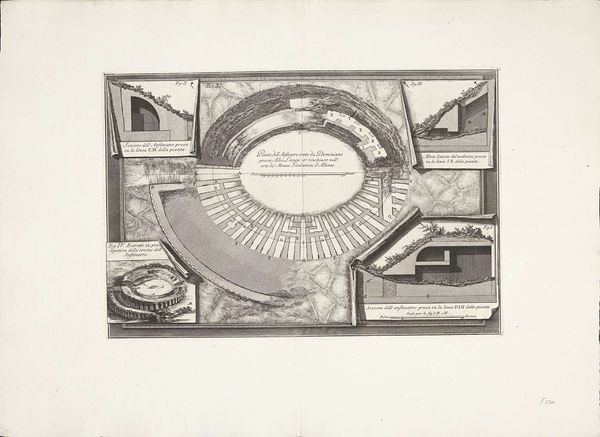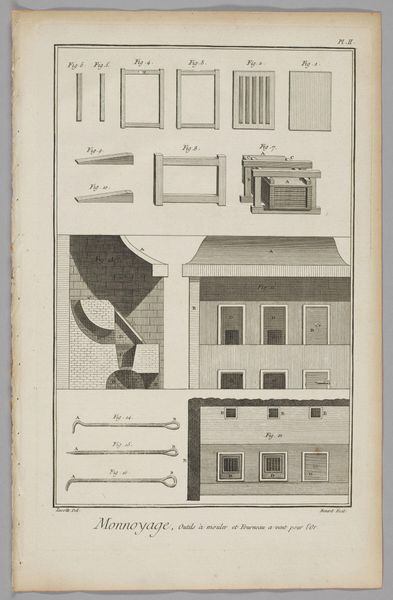
drawing, print, etching, paper, engraving, architecture
#
drawing
#
neoclacissism
# print
#
etching
#
paper
#
engraving
#
architecture
Dimensions: height 412 mm, width 57 mm
Copyright: Rijks Museum: Open Domain
Curator: Here we have Giovanni Battista Piranesi's "Details van kroonlijst," created in 1762, using etching, engraving, and drawing techniques on paper. Editor: It's incredibly detailed. I find the composition very interesting. It almost seems like a fragmented study, but each element is so precise. What do you see when you look at this work? Curator: First, observe how Piranesi utilizes line. Each stroke meticulously defines the form, revealing a rigorous attention to detail. Consider the arrangement: the geometric shapes against the curvature, all within a carefully constructed composition. This deliberate ordering generates a formal harmony that is quite compelling. Editor: So the lines and shapes create this…harmony? Is that something unique to architectural drawings? Curator: Not uniquely, but it is vital here. These details represent not just architectural components, but ideas, concepts of order, and proportion, prevalent at the height of neoclassicism. Notice also the print's surface quality, its tonality which elevates it beyond a mere technical study into a piece imbued with visual interest. How might this tonality influence our perception? Editor: I see how the varying tones create a sense of depth and shadow, giving the two-dimensional print a sculptural quality, despite it simply being an image of architecture. That adds a layer of complexity, turning this technical illustration into a study of form and light. Curator: Precisely! We begin to see the image as more than the sum of its parts: a powerful interplay of line, form and texture that encapsulates a specific historical approach to aesthetics. Editor: I never thought of technical drawings as carrying this much aesthetic weight, it gives a whole new layer of depth to it.
Comments
No comments
Be the first to comment and join the conversation on the ultimate creative platform.
